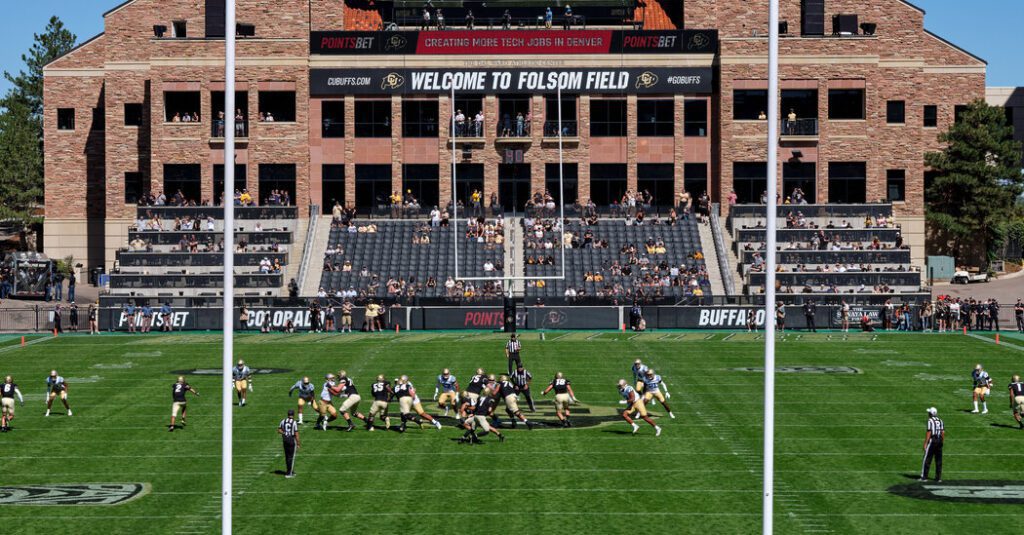Brent Jackett knows a thing or two about college sports. As a former college football player and coach at Penn State and now an executive at a sports recruiting consulting firm, he's well aware of the issues surrounding college athlete compensation.
But even for an industry veteran like Jackett, the news Thursday that the NCAA had reached a surprising settlement in a class-action antitrust lawsuit came as a surprise and more than a little unsettling. “Disturbing” and “confused,” he said, were the first words that came to mind.
He wasn't alone in his fears: Interviews, statements and social media posts just hours after the settlement was announced show many feeling anxious and concerned about the future of college sports.
“These are unprecedented times, and these decisions will have a profound impact on the lasting landscape of college sports,” University of Colorado Boulder President Phil DiStefano and the school's athletic director Rick George said in a statement.
If approved by a judge, the $2.8 billion settlement would allow for a revenue-sharing plan that would allow Division I athletes to be paid directly by their schools for playing sports, marking the first time in the nearly 120-year history of NCAA Division I that schools would be allowed to allocate roughly $20 million a year toward paying players starting as early as the 2025 football season.
Jackett came up with the word “unrest” because he thought about the impact that a settlement forged by the largest, wealthiest universities with robust football programs could have on coaches and players at smaller universities and lesser-known sports.
And confusion, too, because families of college athletes can quickly become overwhelmed with all the different ways students can get compensated. In years past, the only compensation available to students was an athletic scholarship. But now, with revenue-sharing plans and possible compensation contracts involving the student's name, image and likeness, there's much more to consider when planning a college athlete's career.
“When this becomes big news, people see the pot of gold at the end of the tunnel,” Jackett said.
Many questioned what the financial burden would be from a revenue-sharing plan.
Smaller conferences such as the Big East, which includes Georgetown, Villanova and the University of Connecticut, are “strongly opposed” to the settlement, citing concerns about unfair burdens of revenue-sharing costs. They say universities in larger conferences, which tend to have higher-profile sports teams, television contracts and much higher revenues, should be responsible for shouldering more of the costs.
Even coaches at powerhouse sports programs like the University of Florida in the Southeastern Conference had misgivings: In an interview with The Associated Press, Florida softball coach Tim Walton questioned how this would affect smaller sports programs on campus and how the university would handle revenue sharing with players.
Another concern of critics of the settlement was whether female athletes would be paid fairly. The settlement was silent on how female athletes would be paid relative to their male counterparts, but Title IX prohibits discrimination based on sex in education.
Hudson Taylor, executive director of LGBTQ sports advocacy group Athlete Ally, welcomed the settlement but said in a statement that it “lacks important regulations for non-revenue-generating sports.”
“Without such restrictions, many athletes are likely to be left behind, particularly in sports with a majority of female sports and those with openly LGBTQI+ athletes,” Taylor said.
But many are skeptical of how the settlement would actually play out. Terry Conner, athletic director at Thomas More University in Kentucky, said in an interview that he feels the reality of revenue sharing is a bit far-fetched. The school is in Division II and wouldn't be subject to a revenue-sharing plan, but Conner said it would still have an impact on college sports overall.
Conner said the settlement is just the latest in a series of big changes at the NCAA in recent years, and “the big question is going to be how we have to adapt to that.”
Jackett cautioned that it's “premature” to assess the settlement's full impact because details have not been released, and Sam C. Ehrlich, a Boise State University professor who has written extensively about college athletes, said the settlement is a milestone but shouldn't be seen as the be-all and end-all for college sports.
Ehrlich said the landscape of college sports is constantly changing, noting that the Supreme Court unanimously ruled in 2021 that the NCAA cannot prohibit payments to college athletes. The ruling paved the way for NIL, or payments based on athletes' name, image and likeness. He also cited Johnson v. NCAA, an ongoing case over whether college athletes should be classified as employees, which could have significant implications on labor and taxes.
“This is a big moment, but it's not the end of the road,” Ehrlich said. “I wouldn't go so far as to say, 'This is the climax,' but this is going to continue for years to come.”
Billy Witts Contributed report.

